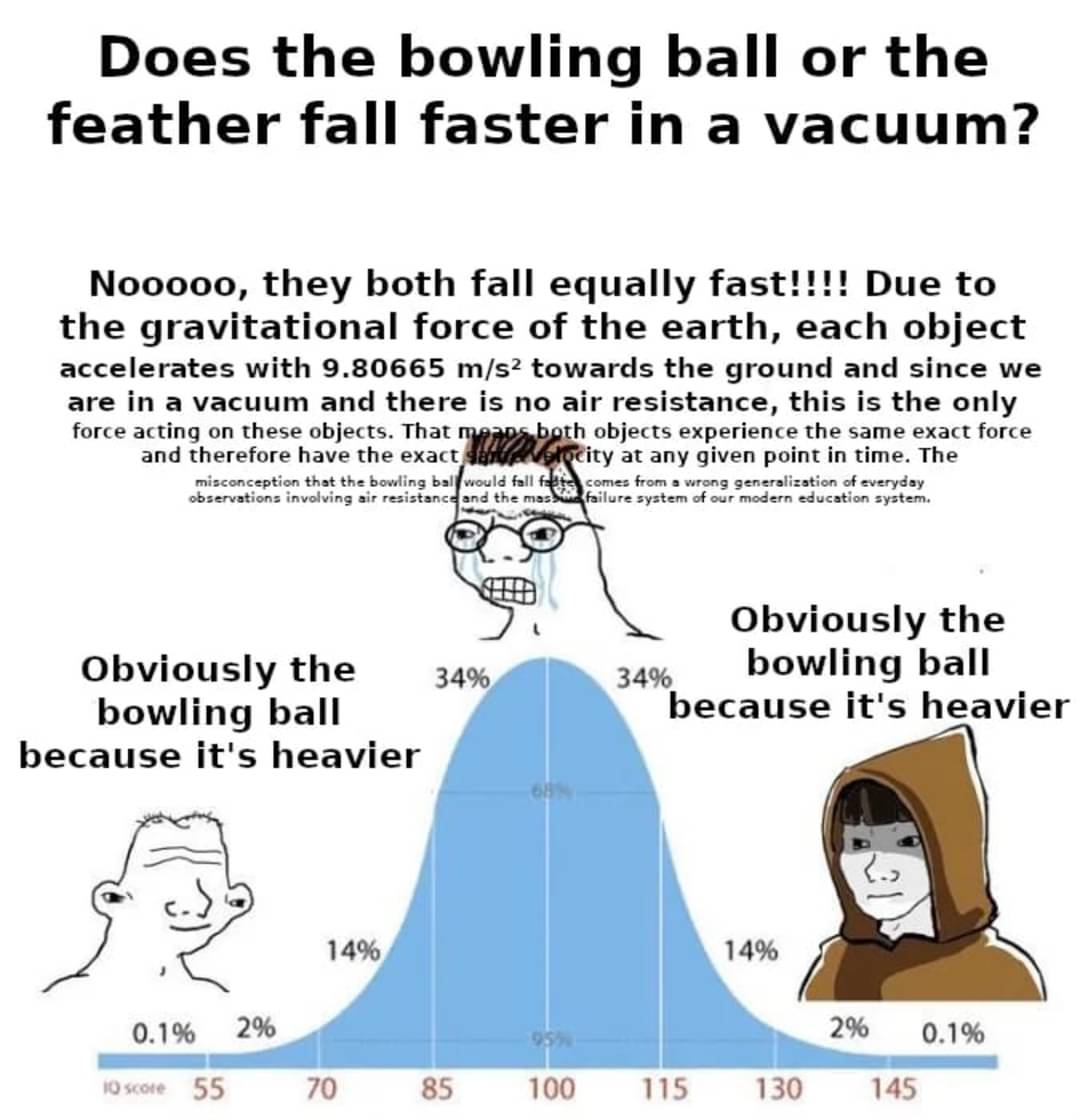this post was submitted on 28 May 2024
0 points (NaN% liked)
Science Memes
10531 readers
2184 users here now
Welcome to c/science_memes @ Mander.xyz!
A place for majestic STEMLORD peacocking, as well as memes about the realities of working in a lab.

Rules
- Don't throw mud. Behave like an intellectual and remember the human.
- Keep it rooted (on topic).
- No spam.
- Infographics welcome, get schooled.
Research Committee
Other Mander Communities
Science and Research
Biology and Life Sciences
- !abiogenesis@mander.xyz
- !animal-behavior@mander.xyz
- !anthropology@mander.xyz
- !arachnology@mander.xyz
- !balconygardening@slrpnk.net
- !biodiversity@mander.xyz
- !biology@mander.xyz
- !biophysics@mander.xyz
- !botany@mander.xyz
- !ecology@mander.xyz
- !entomology@mander.xyz
- !fermentation@mander.xyz
- !herpetology@mander.xyz
- !houseplants@mander.xyz
- !medicine@mander.xyz
- !microscopy@mander.xyz
- !mycology@mander.xyz
- !nudibranchs@mander.xyz
- !nutrition@mander.xyz
- !palaeoecology@mander.xyz
- !palaeontology@mander.xyz
- !photosynthesis@mander.xyz
- !plantid@mander.xyz
- !plants@mander.xyz
- !reptiles and amphibians@mander.xyz
Physical Sciences
- !astronomy@mander.xyz
- !chemistry@mander.xyz
- !earthscience@mander.xyz
- !geography@mander.xyz
- !geospatial@mander.xyz
- !nuclear@mander.xyz
- !physics@mander.xyz
- !quantum-computing@mander.xyz
- !spectroscopy@mander.xyz
Humanities and Social Sciences
Practical and Applied Sciences
- !exercise-and sports-science@mander.xyz
- !gardening@mander.xyz
- !self sufficiency@mander.xyz
- !soilscience@slrpnk.net
- !terrariums@mander.xyz
- !timelapse@mander.xyz
Memes
Miscellaneous
founded 2 years ago
MODERATORS
you are viewing a single comment's thread
view the rest of the comments
view the rest of the comments

I haven't seen anyone mention this yet, so here's how I understand it. The feather falls slower in non-vacuum conditions because it reaches its terminal velocity much more quickly than the bowling ball.
Edit: terminal velocity: https://en.m.wikipedia.org/wiki/Terminal_velocity
Also edit: https://ucscphysicsdemo.sites.ucsc.edu/physics-5a6a/coin-and-feather/#:~:text=Because%20the%20feather%20has%20a,small%2C%20the%20feather%20falls%20slowly.
How would it reach terminal velocity in a vacuum?
I imagine terminal velocity with no air resistance would be 9.8m/s/s. I was saying that the feather reaches terminal velocity more quickly than a bowling ball in non-vacuum conditions
9.8 m/s/s is acceleration due to gravity, not a velocity, or its units would be m/s